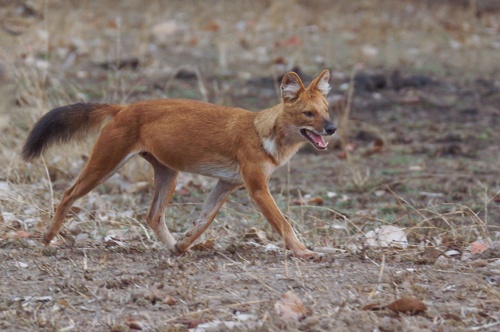
Dhole
The dhole (Cuon alpinus) thrives in Asian forests, recognized for its striking red fur and social hunting strategies. Renowned for their vocal communication, these pack hunters play a crucial ecological role, maintaining balance by preying on large ungulates. Their distinctive whistles and cooperative nature make them fascinating canids.
10-13 years
Lifespan
45646.0 kg
Weight
Length: 75 - 110 cm
Size
Brown, Grey, Red, Black, White, Gold, Tan
Color
45 mph
Top Speed
Endangered
Conservation Status
Decreasing
Population Trend
Characteristics
The dhole, or Cuon alpinus, is a highly social canid known for its vibrant red coat and bushy tail. These wild dogs inhabit dense forests and grasslands across Asia. They are skilled hunters, often working in packs to take down prey much larger than themselves. Dholes communicate with a unique range of vocalizations, including whistles, screams, and clucks.
Distribution Range of the Dhole
The dhole (Cuon alpinus) is native to Asia. Its geographical distribution ranges across several countries, including India, Nepal, Bhutan, Bangladesh, Myanmar, Thailand, Laos, Vietnam, Cambodia, Malaysia, Indonesia, and parts of China and Russia. Historically, dholes were found throughout Central Asia, though their range has significantly diminished.
Dhole's Habitat
Environmental Conditions
Dholes inhabit a variety of environments, but they are primarily found in forested areas. They prefer dense forest regions, both tropical and subtropical, including deciduous, evergreen, and dry forests. They can also be found in grasslands and scrub forests, particularly in areas close to water sources. Dholes thrive in regions with a warm to moderate climate, although they can adapt to cooler environments in mountainous regions.
Ecological Niche
Dholes play a crucial role in their ecosystem as apex predators. They typically hunt in packs and target medium to large-sized ungulates. Their social structure and pack hunting strategies contribute to maintaining the balance of prey populations in their natural habitats. Dholes are highly adaptable and can survive in a wide range of ecological niches, provided there is sufficient prey and cover.
Copyright @ Nature Style Limited. All Rights Reserved.
 English
English